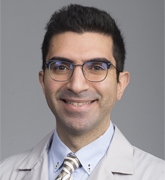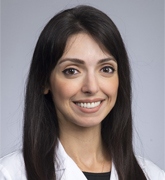Increased social media utilization and content creation by cardiothoracic surgery programs during the coronavirus disease 2019 pandemic. Journal Article
Local Library Link: Find It @ Loyola
| Authors: | Gadelkarim, M; Alrahmani, L; Tonelli, C; Freeman, R; Raad, W; Lubawski, J; Vigneswaran, WT; Abdelsattar, ZM |
| Article Title: | Increased social media utilization and content creation by cardiothoracic surgery programs during the coronavirus disease 2019 pandemic. |
| Abstract: | Objectives: The coronavirus disease 2019 (COVID-19) pandemic has changed the landscape of professional activities, emphasizing virtual meetings and social media (SoMe) presence. Whether cardiothoracic programs increased their SoMe presence is unknown. We examined SoMe use and content creation by cardiothoracic surgery programs during the COVID-19 pandemic. Methods: We searched the Accreditation Council for Graduate Medical Education to identify all cardiothoracic surgery residency programs (n = 122), including independent (n = 74), integrated (n = 33), and congenital (n = 15) training programs at 78 US cardiothoracic surgery teaching institutions. We then manually searched Google, Facebook, Instagram, LinkedIn, and Twitter to identify the associated residency and departmental accounts. The timeline for our search was between 10/2021 and 4/2022. March 2020 was used as the starting point for the COVID-19 pandemic. We also contacted the account managers to identify account content creators. The data are descriptively reported and analyzed. Results: Of 137 SoMe accounts from 78 US cardiothoracic surgery teaching institutions, 72 of 137 (52.6%) were on Twitter, 34 of 137 (24.8%) on Facebook, and 31 of 137 (22.6%) on Instagram. Most accounts were departmental accounts (105/137 = 76.6%) versus 32 of 137 (23.4%) training program accounts. Most training program-specific SoMe accounts across all platforms were created after the COVID-19 pandemic, whereas departmental accounts were pre-existing ( .001). The most pronounced SoMe growth was on Instagram at the training program level, with 91.7% of Instagram accounts created after the pandemic. Trainees are the content creators for 94.4% of residency accounts and 33.3% of departmental accounts. Facebook's presence was stagnant. Congenital training programs did not have a specific SoMe presence. Conclusions: SoMe presence by cardiothoracic surgery training programs and departments has increased during the pandemic. Twitter is the most common platform, with a recent increased trend on Instagram. Trainees largely create content. SoMe education and training pathways may be needed for involved trainees to maximize their benefits. |
| Journal Title: | JTCVS open |
| Publisher: | Unknown |
| Date Published: | 2022 |
LUC Authors
-
 38
38Abdelsattar
Related LUC Article

